Eve Barmettler - 45 years with the Icelandic Horses
By: Gyöngyi Molnár Posted: 18/09/2020
Interview with Eve Barmettler
We interviewed Eve Barmettler, former owner of the Hestar-Hof, who has been breeding, riding and training Icelandic horses in Switzerland. She is a professional with a wealth of experience who has devoted her whole life to the equestrian world.
Eve Barmettler is the founder of Hestar-Hof, a company that has specialized in Icelandic Horses since 1975 and she also has a wide-ranging curriculum as a professional rider, horse show judge and an extensive horse training and horse breeding career.
We have interviewed her to learn about her activities, challenges as a horse breeder and her personal view on the scientific approach to the training methods of these adorable and noble animals.
We invite you to read the interview and see all these interesting issues through the eyes of this professional who has dedicated her whole life to horses and has decades of experience in that.

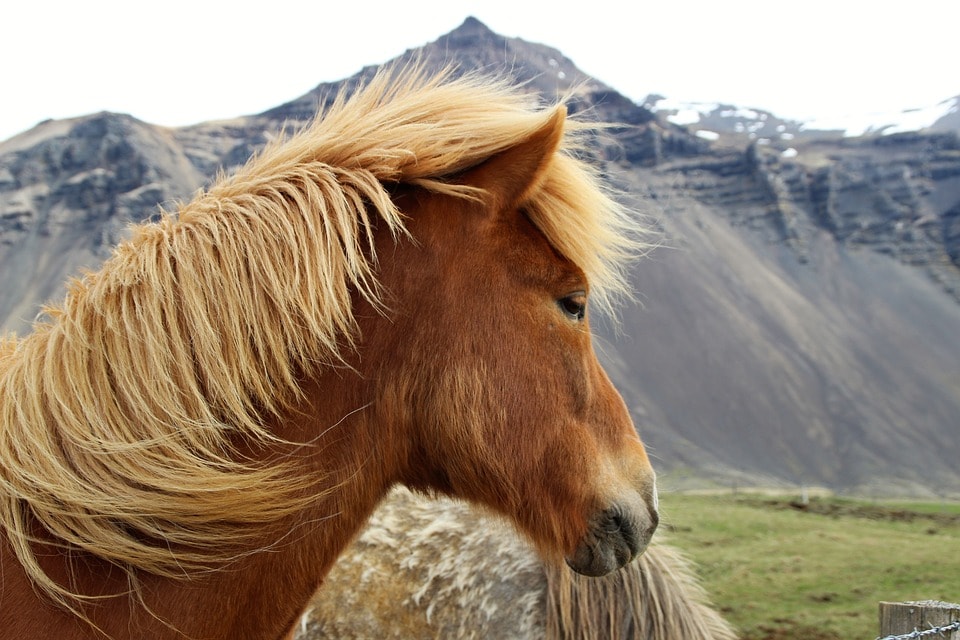
Meet Eve Barmettler and the horse farm, “Hestar-Hof”
Eve, where does your passion for gaited horses come from?
Since I was a child, when I was in school, I have looked after Icelandic horses. I also experienced the beginning of horseback riding as a hobby and the idea of keeping horses in open stables. In 1966, I got my first Icelandic horse.
You are the founder of “Hestar-Hof”, a company that has been in business since 1975. What does it offer? What’s its main activity?
Between 1975 and 2012, there were always between 60 and 70 Icelandic horses and sometimes other gaited horses on the farm. We offered horse boarding, and Icelandic horses and riding gear for sale. We also bred, raised and trained Icelandic and other gaited horses www.evebarmettler.ch.
In 2012, the Hestar-Hof farm was sold to a well-known Icelandic horse trainer. The farm’s new name is "Hestar Hof Heller" “HestarHofHeller”.
For so many decades, how has the company grown and what were its most significant changes?
The hobby became my job. Today I specialize in riding Icelandic horses and other gaited horses.
“Hestar-Hof” turns 45 this year and you must be very proud. How are you going to celebrate? New projects?
Even though I sold it, I'm happy that those activities focused on Icelandic horses are still going on.
My new projects are already underway: a diploma program specializing in gaited horses.
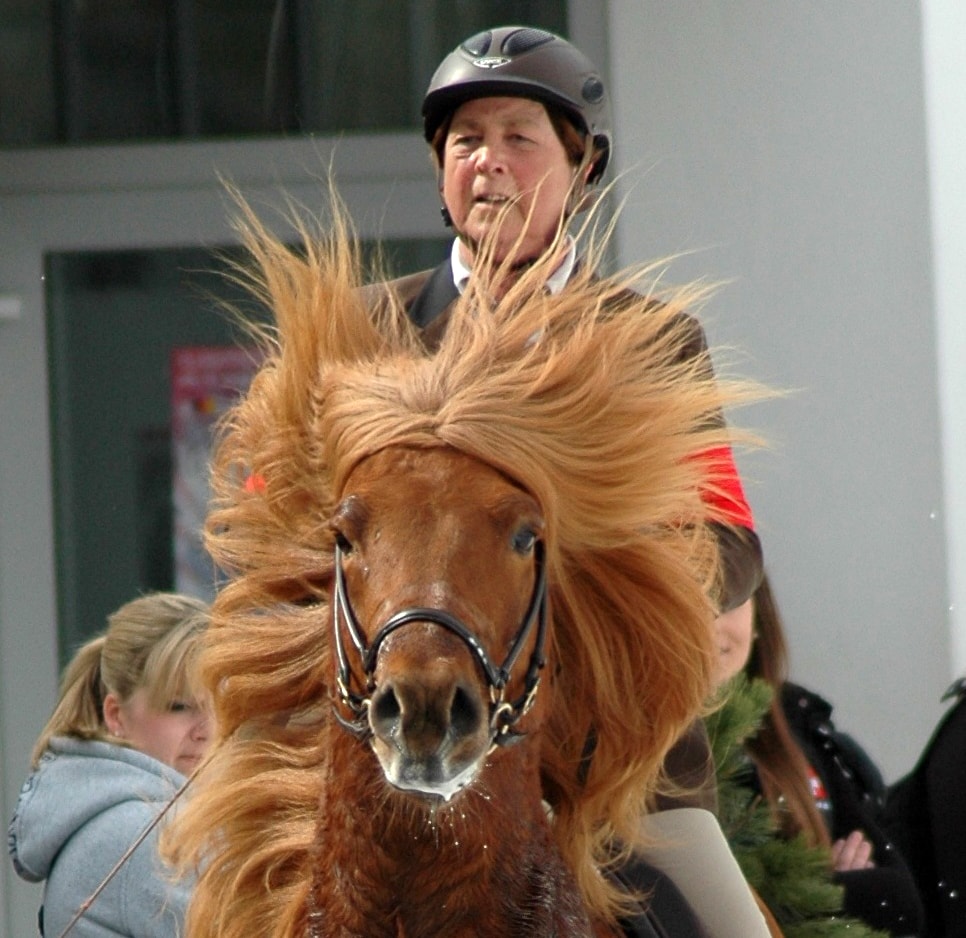
Would you like to be part of a group with an equestrian soul?
Join the Ampascachi Community. Obtain exclusive benefits for your holidays.
We tell you how to start, train and take care of your horse.
Interviews with direct providers of riding tours around the world.
Opinions of outstanding equine scientists and personalities in the equestrian sport world.
Horse breeding
When and why did you choose to raise gaited horses?
There is an Icelandic saying: "Among Icelandic horses, even geldings can procreate". In the first 20 years, we bred more than 30 foals with our mares and studs registered in the Studbook. www.worldfengur.com.
How many horses do you currently work with? What breeds are they?
A few years ago I retired, but I still ride every day at a friend’s farm. I have two Islandic horses of my own and between 4 and 5 horses for training or sale. www.islandpferdehof-heuberg.ch
And why Icelandic horses?
In 1961, while I still was in high school in Zurich, Switzerland, I discovered Icelandic horses and fell in love with them.
What are these animals like? What do you like so much about them, more than any other breeds?
I have worked with gaited horses for more than 5 decades. I’ve had different horse breeds such as Peruvian Paso, Paso Fino, Mangalarga Marchador, American Saddlers, Aegidienberger, etc.
However, my favourites are still the little, sturdy Icelandic horses. They're easy horses with five unique gaits.
Since the middle of the last century, they have become popular and there has been an increase in their breeding and their use for leisure and sport activities, even in world championships. This proves that it is the ideal horse that has everything for Central Europe.
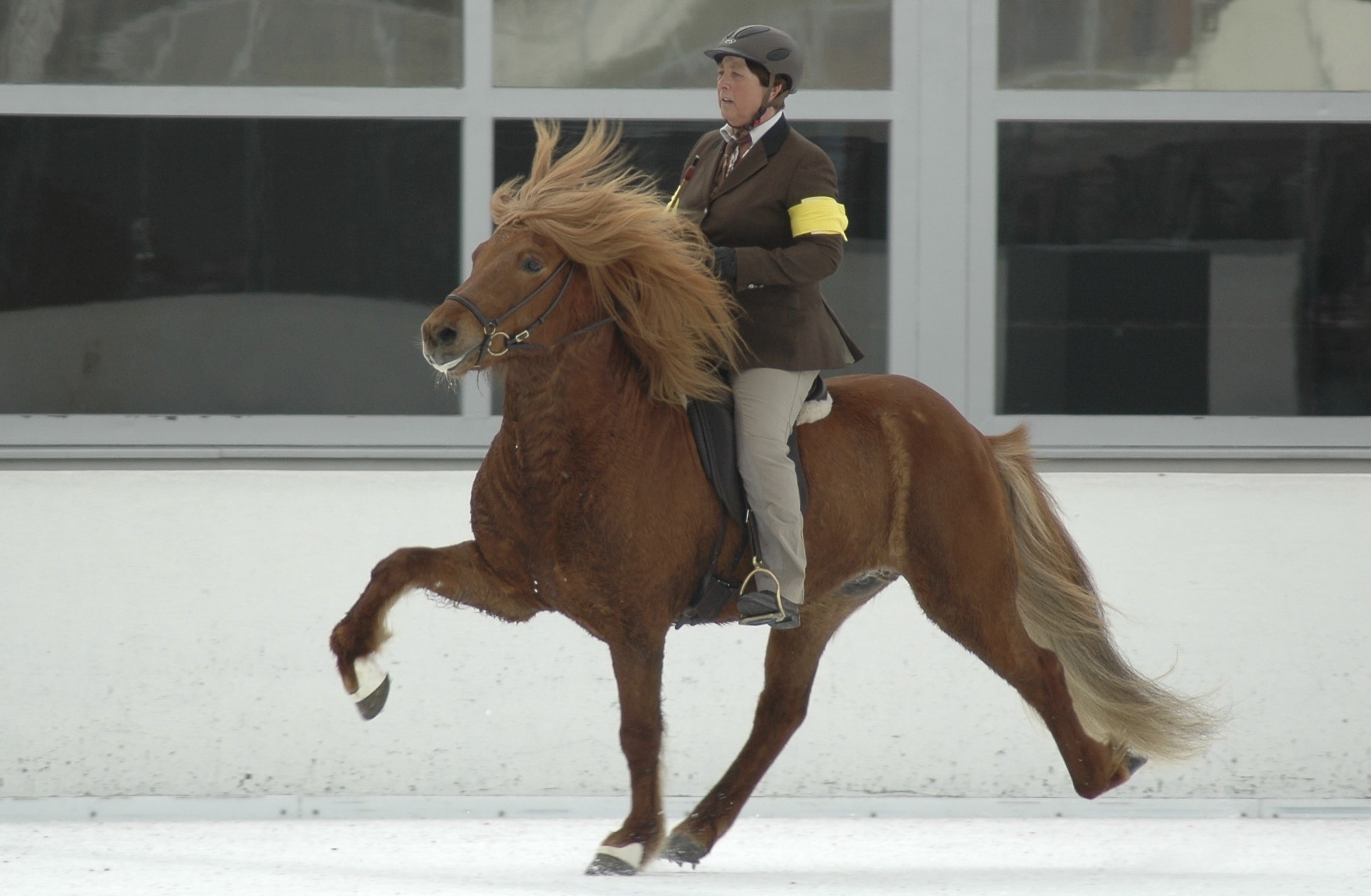
Is there an institution in Switzerland that groups or represents gaited horse breeders?
Icelandic Horses: The "IPVCH - Islandpferde Vereinigung Schweiz" (Icelandic Horse Association of Switzerland) which is regulated by the FEIF (International Federation of Icelandic Horse Associations). It regulates the breeding of Icelandic purebred horses, a 1000-year breed, and sports with Icelandic horses internationally.
Paso Fino: The "PFHAS - Paso Fino Horse Association of Switzerland" which regulates breeding and sports at the national level in collaboration with the countries of origin.
Do you keep your horses in a field or a stable?
The Icelandic horses live in an open stable and in a field, with a few exceptions (wounded horses, studs).
The gaited horses, depending on their breed and use, live in an open stable or indoors.
Have you used reproductive cloning or embryonic transplantation techniques in your breeding program
Artificial insemination or embryonic transplantation are very rare in Icelandic horses. Cloning is under discussion, but it is not yet banned; there are about 60 to 70 foals a year.
Since there are too few gaited horses in Switzerland, I have no experience. There are only about 10 to 15 foals a year: Paso Fino 2-5, Peruvian Horses 0-1, Mangalarga 0-1, American Saddler 0-1, and crossbreds 0-2.
In your opinion, what are the biggest challenges for horse breeders?
Switzerland is too small and expensive for horse breeding. Besides, there is also a very large supply of three-gaited (not gaited) horses at very low prices. Only the best specimens of each breed should be used for breeding.
Breeders who do it as a hobby use their only mare or the one that is not sold on the market with the only stud they can get. They thus create a second-quality horse base. As regards their breeding process, Icelandic horses are not very different from other breeds (with the difference that Icelandic horses can be ridden only when they are 4 or 5 years old).
The challenge in breeding gaited horses consists of professional selection and specialized preparation/training of each breed with its specific gaits.
How is the environment of the horse sales market changing?
There is a great demand for Icelandic horses and we need more imports from the country of origin, Iceland, or other major breeding grounds. They are usually prepared for riding or sometimes, depending on their use, they receive a more specific training. The farms that sell Icelandic horses are also training places with a very good structure for both horses and riders.
Other gaited horses are not well known because the market is poorly organized (the Paso Fino are making progress).
Riding a horse with an isochronic four-beat gait requires a lot of training and it does not always match 100% with classic riding. Many riders who do it as a hobby focus a lot on groundwork or lunging, or riding with light seat, but they neglect the four-beat gait training. This is why the spread of gaited horses is difficult and they are not making much progress in Central Europe.
What is the mission and vision of your company, “Hestar Service”?
To implement more professionalism and promote gaited horses in equestrian sports:
- It has already been achieved with Icelandic horses: breeding, raising and training, international sports.
- Paso Fino: professionalism is at its early stages.
- Other gaited horses: it’s difficult, there is no interest and a shortage of professionals.
- Grouping those riders interested in gaited horses. In 2017, the creation of the club Zusammenschluss der Gangpferdeinteressierten, 2017 Grundung des Vereins "Gangpferde Schweiz" (Gaited horses of Switzerland), but there is limited interest (Icelandic horses are well organized at an international level, but for other gaited horses there is not much interest).
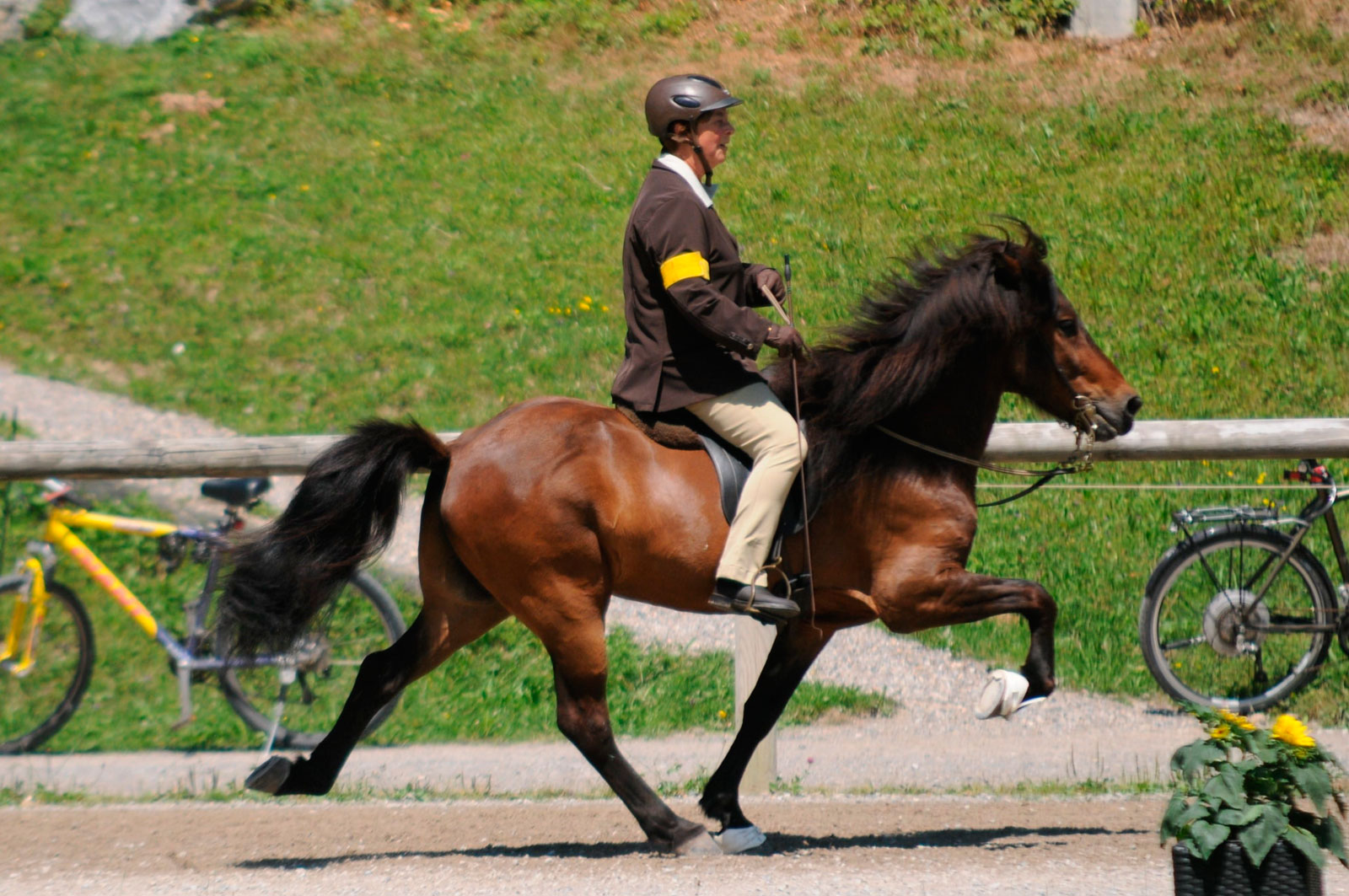
Horse training
Do you think that the Learning Theory and the principles of Ethology, the concepts disseminated by the International Society for Equitation Science (ISES), are in the right direction so that we can have solid bases for horse training while considering the well-being of horses? Is scientific knowledge of equine behaviour widespread enough in the world of the horse industry?
Today there are many reliable offers to learn horse-related professions, especially with gaited horses (OdA Pferdeberufe / IPV CH / IGV) and they are focused on the well-being of horses.
Apart from breeding and raising horses, you also train them. How old are your horses when you start to train them? Do you do any in-hand work with them (not riding) from an early age?
Gaited horses and riders train based on the regulations of the OdA Pferdeberufe (Labour organization for equine jobs), a diploma program mainly focused on classical horsemanship.
You can start to ride an Icelandic horse between the ages of 4 and 5 (their growth ends at the age of 7/8).
Depending on their breed, gaited horses can start to be ridden between the ages of 2 and 4.
Groundwork – Lunging – In-hand work – Light seat / aids – basic training – gait training.
As regards the education of gaited horses, what principles do you apply?
Depending on the horse’s lineage, his gait potential is already defined to some extent.
To see its lateral potential, you must observe the young horse in a field, with the herd or when he walks freely on the arena. Depending on the breed or its use, different traits are sought.
If the horse shows lateral potential without the help of the trainer or even a clean tölt for a certain distance, we can be almost sure that horse will be a pleasure to ride.
The rider's experience is key. It’s also important that he knows what to achieve in a talented young horse with meticulous work. In horses with lateral potential, balance and tension are fundamental. The tölt / four-beat gait should be achieved throughout the training process with the support of few aids.
Groundwork – Lunging – In-hand work – Lunge with two lines – Light seat / aids – basic training – gait training.
For those horses with little tölt or four-beat gait potential, it is essential to train them in a classic style at first. Only when they know the aids, you can prepare the horse for tölt training with gymnastic exercises.
If the horse is not very talented, it must be taken into account that the tölt training will be long and difficult, and it will go against the horse’s well-being.
Training is an individual process and it should be adjusted to the horse’s potential.
Do you train horses from scratch or work with those already prepared by someone else?
Today I no longer train them from scratch, but I do train difficult or poorly trained horses. My specialty is flying pace training and correcting four-beat gait problems.
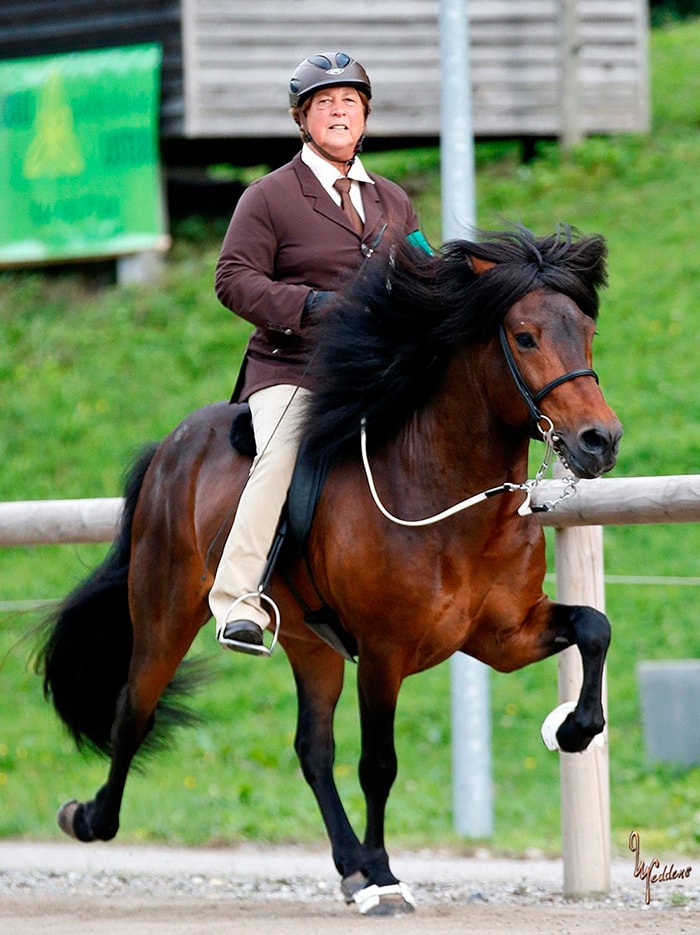
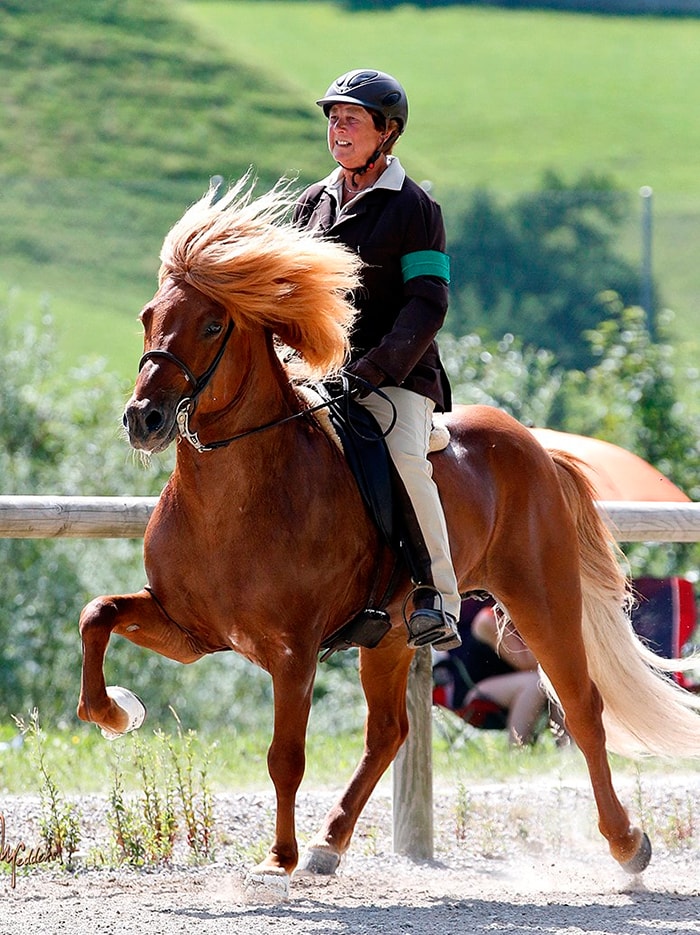
Subscribe to the Ampascachi Community and obtain benefits and exclusive content. Furthermore, we offer free advice on horses and equestrian tourism.
Activities in equestrian sports
You prepare gaited horses and riders for different horse shows. What are the main events in which they participate and what are the different tests like?
Icelandic horse competitions with FEIF/FIPO regulations www.feif.org.
To meet the demands of equestrian sports with Icelandic horses, oval arenas and gait-specific arenas of 200 m - 200 m with a hard and smooth surface are required. The 4-gait, 5-gait, tölt and walk tests, as well as flying pace races are offered for different age and difficulty ranges, at both national (Switzerland) and international level.
Once a year, there is a championship in Switzerland and, twice a year, the international championship of equestrian sports for Icelandic horses.
There are championships for gaited horses organized by the IGV (International Association for Gaited Horses) www.igv-online.com / www.gangpferdeschweiz.ch.
Equestrian sports with gaited horses are not very popular in Switzerland. The "Gangpferde Schweiz" (Gaited horses of Switzerland) organizes a gaited horse championship with different tests once a year. It is not big and mostly Icelandic horses participate.
In the competition, what is the biggest challenge for horses and riders?
Touch – training – experience – enjoy the participation.
When you ride a horse, not only in equestrian sports, falls and injuries can occur. How can riders who have suffered some major injuries overcome the fear of riding again?
Training – experience – safety measures – the right trainer.

Educational training and equine jobs
How is the educational training of equine jobs changing? Some people want to pursue a career with horses. What perspectives do they have?
Gaited horses require specific training and riding methods, which have become more popular in Central Europe over the last few decades.
Since 2008, in Switzerland an official diploma program has offered professional training to work with gaited horses.
Today, how can we pursue a horse career? And what levels of education should we go through to become experts? What’s your recommendation?
- With a lot of talent and/or a lot of money!
- A lot of educational training and study!
- Go to an official institution (in Switzerland: OdA Pferdeberufe / HBB Berufsbildung / IPV CH / IGV).
- Find your market niche; try to find your way according to the horse breed and the different riding styles.
- Horseback riding as a hobby needs many trainers with a lot of patience for riders who love horses.
Are there new professions that horse enthusiasts can learn? Is there in Switzerland a degree or certification for horse trainers or instructors that teach horses to react correctly to leg and rein aids?
OdA Pferdeberufe
(Labour organization for equine jobs). This organization offers a 3-year professional training / basic trainingcourse, and you can get your degree in 6 specialities:
– Horse care
– Classical equitation
– Western horsemanship
– Equine careers
– Carriages
– Equitation: gaited horses (Trainer - level C)
OdA Pferdeberufe / HBB
(Labour organization for equine jobs, advanced training). "Advanced training" offers specialized educational training and the university level exams for these specialties:
– Specialist in gaited horses (Trainer - Level B)
– Expert in gaited horses (Trainer - University Level A)
IPV CH
/ FEIF
The IPV CH (Icelandic Horse Association of Switzerland) offers all internationally recognized training courses,
complying with the regulations of international FEIF, with exams in:
– Icelandic Horses, courses for trainers levels C/B/A
– Icelandic Horses, basic horse training (to get the horse to learn the basics of riding)
– Icelandic Horses, breeding and judge in equestrian sports
IGV
The IGV (International Association for Gaited Horses) offers professional training and testing for gaited horses:
– Gaited horses, trainer - levels C/B/A
– Gaited horses, basic horse training (to get the horse to learn the basics of riding)
– Gaited horses, judge in equestrian sports

Experiences with Equestrian Tourism
Equestrian Tourism activities are becoming increasingly popular and the Icelandic horse is a major protagonist of this reality. Eve, what do you think about this trend that allows more people to be in contact with these noble animals and travel with them in contact with nature?
Riders with no or little experience, families or horseback riding enthusiasts want to enjoy nature on horseback.
Advanced riders or experts prefer clinics or courses with their favourite breed and their favourite riding style.
Have you ever taken a horse riding holiday to discover other countries around the world? In that case, which countries did you visit and what did you like most about these experiences?
No, I haven’t ... (in tourism, they would give me a horse that is worse than mine at home).
I travel abroad for competitions, clinics, breed information or horse sales (IS, NO, SE, FI, DK, NL, FR, E, DE, AT, IT, GR, USA, CAN usw.).
Do you think that gaited breeds have a future, especially in Equestrian Tourism?
For tourism in Switzerland, it would be too costly to buy the horses, keep them, and train their specific gaits.
Gaited horses do not get a lot of advertising in Switzerland. We need professional trainers for these breeds.
– Icelandic horses: great popularity
– Paso Fino: are becoming increasingly popular
– Other gaited breeds: little or nothing at all
At Ampascachi, we share your same passion for another gaited breed: the Peruvian horse. This is why we want to ask you: Do you know the Peruvian horse? Have you ever had a chance to ride one of them?
I had excellent Peruvian horses. I have also trained several of them and took them to horse shows.
Have you ever visited Argentina? Would you like to explore it one day on a Peruvian horse?
A trip with Ampascachi is on my wish list!
Eve, thank you very much for the interview
and all the information about your job and its activities.
It will be an honour for us to welcome you in Argentina and show you our beloved Peruvian horses and our wonderful landscapes.
Are you passionate about horses, too? Do you want to learn how to train them?
Download our free eBook Horse training step by step. When you see how your horse learns and begins to understand your signs and aids, you will be filled with joy.
And if you want to be a professional horse trainer and get field-based training, you should check out our training program. You will have the opportunity to live in our equestrian centre and experience our full training process with young horses.
~
THIS COULD ALSO BE INTERESTING
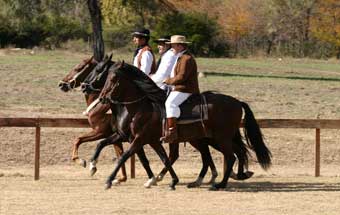
Gaited Horses: Horses with a "Special Gait"
The basic gaits of most horse breeds are the walk, the trot and the canter or gallop. But other breeds have a special ambling gait which is more comfortable to ride than the trot.
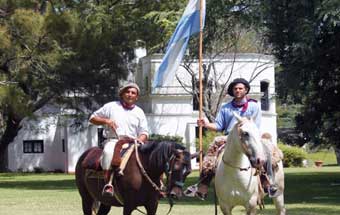
Argentina: Tourism and horseback riding
Argentina is known for being a vast land, its natural beauties and culture. Trail riding tours in this country are a unique, unforgettable experience.
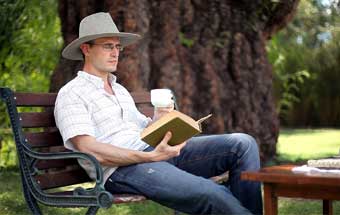
Improve your leadership qualities with horses
Being with horses gives us positive feelings, increases our self-esteem, improves our understanding of body language and empowers our confidence that we can reach our goals.
~
WHAT IS YOUR OPINION? LEAVE A COMMENT
Your comments
Thank you Eve for your clear and open opinion.
What a good article. Congratulations! I live in Carlos Paz and I'm looking for a gelding. Thank you
Beautiful & exciting article on the Icelandic horse. I fell in love with Eve, and deeply respect her experience & knowledge. If Eve ever comes to the US, she is always welcome at our Ranch in Oregon. We would be most honored! Paso by Paso Equine Rehabilitation & Educational Program
Planning your horse riding holidays?
Join the Ampascachi Community. You will get exclusive advantages and guidance for your next horse riding holiday.


 German
German French
French Spanish
Spanish
MESSAGE TO OUR READERS
The content creation team at Ampascachi Horse Riding Holiday would like to thank our readers who have written a comment on this interview with Eve Barmettler.
We would like to clarify that the content creation team does not make comments or judgements on the answers of the interviewed person.
In this case we solely publish the opinions of our blog readers about the concepts of the interview, whenever they do not offend the interviewed person.
Thank you again for your comments.